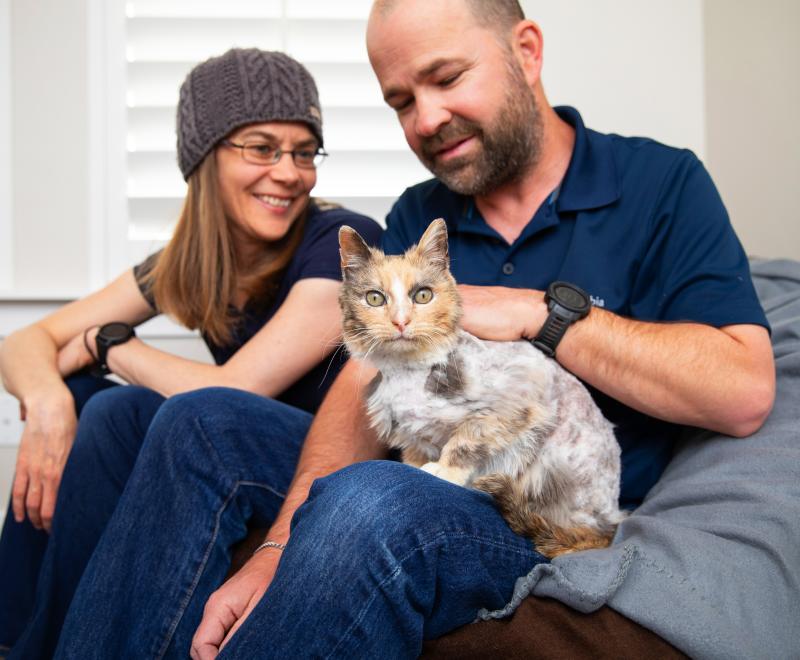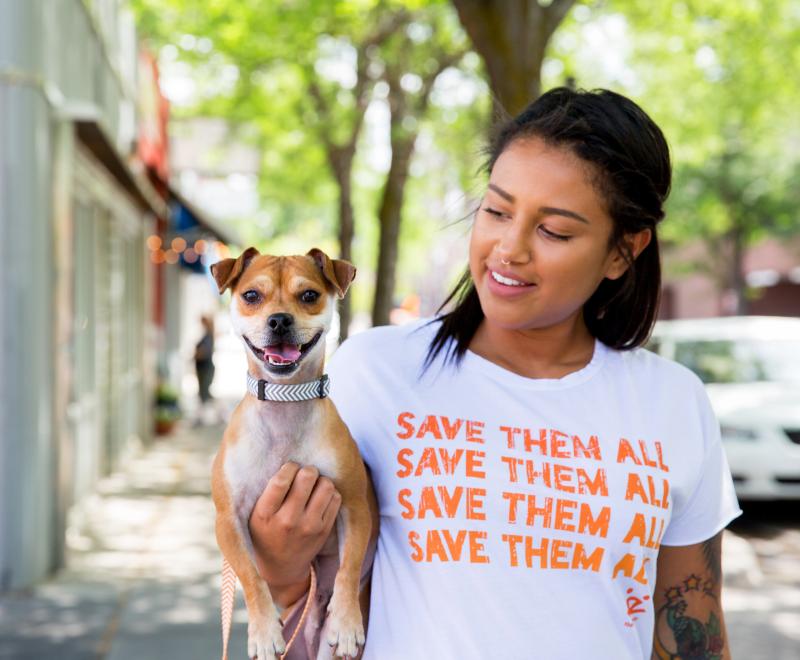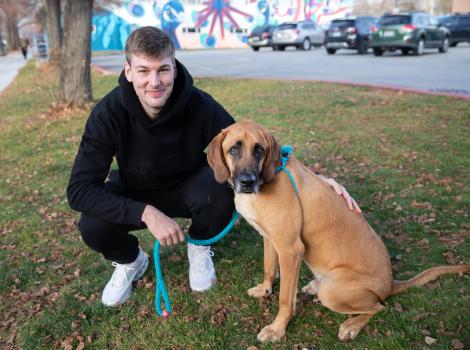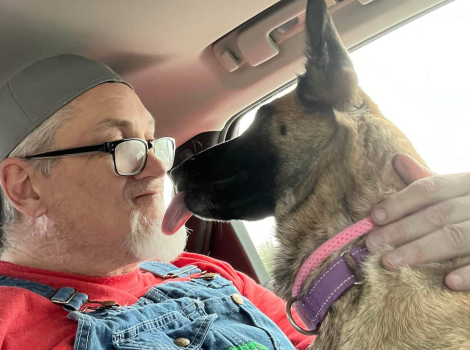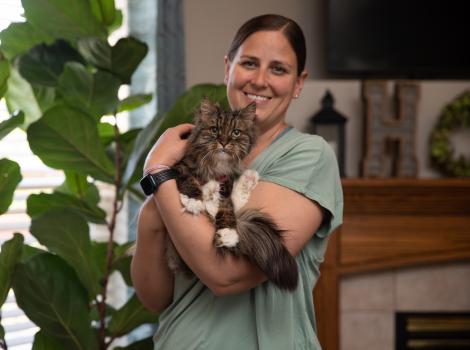How training one dog inspired shelter-wide change

Boo ticked a lot of boxes for potential adopters: He was house-trained, neutered, healthy, and got along well with other dogs. But he had spent months at Gentry Animal Services in rural Arkansas with little adoption interest.
A big, goofy dog with energy to spare, Boo was always ready for adventure. His enthusiasm showed up in bouncy jumps and eager leash pulls, which sometimes made walks a challenge. With limited staff and volunteers, it was hard to give him the consistent interaction and training he needed to shine for potential adopters.
Gentry staff reached out to Best Friends Animal Society, and Dani Rakestraw from the Best Friends Pet Resource Center in Northwest Arkansas went to meet Boo. Best Friends works with shelters across the country to provide support tailored to their needs — including training guidance — to help them increase adoptions and become no-kill.
Simple shifts, remarkable results
“Boo was goofy and jumpy but not malicious,” says Dani. “He just needed more time with people, and that’s exactly what shelters with few staff often can’t give.”
Dani introduced Boo to a head collar designed to help guide a dog's movements while walking on a leash. She first worked on getting him comfortable walking in the new gear. Just as importantly, she showed the staff a few simple handling strategies they could use immediately, without needing to carve out extra time in their day. Then, she put together a training plan that shelter staff and volunteers could use, along with tips to send home with Boo’s future adopter.
[Extra-bubbly dog goes from chaos to calm]
Thanks to the training and his new leash manners, Boo began going on daily walks, which quickly became a highlight of his routine. The regular exercise helped channel his energy in a positive way, and he started to settle more calmly in his kennel. As a result, adopters were able to see a different side of him. Less than three weeks after that impactful session with Dani — and after six months in the shelter — Boo was adopted.
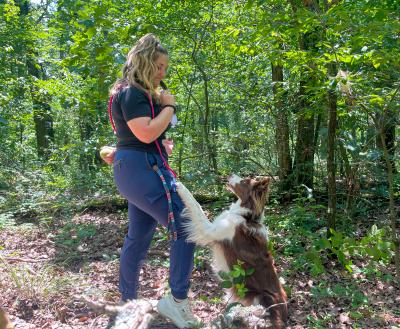
A plan for the next dog, too
But Boo’s story didn’t end with his adoption. It sparked a new approach, one that can now be used for future dogs needing a little extra help.
Often, dogs in shelters face simple challenges that can be addressed without specialized training — excess energy, boredom, or not knowing how to walk on a leash. With a patient, straightforward approach, and using the pet’s daily routine to encourage good behaviors, they can usually be resolved. That’s especially important for shelters with minimal staff and limited resources.
“It’s a tale as old as time,” Dani says. “A dog needs more handling to decrease stress and jumpiness, but stress and jumpiness make it harder to handle the dog. The cycle repeats.”
Training that fits real life
Dani’s background in adoptions helps her design practical training plans that don’t require a specialist to implement. “My goal is always to work with what they have,” Dani says. “I ask: How much time is available? What’s their comfort level with handling? What tools and people do they have access to? Then I build from there.”
For shelter staff stretched thin, Dani emphasizes one message above all: Training doesn’t have to be separate from day-to-day care.
“Every single interaction with an animal is a learning opportunity,” she says. “Dogs have to eat, so use puzzle feeders. They have to come out of kennels, so use that moment to practice manners. You don’t need an arsenal of tools to make a difference.”
[Using Food Puzzles for Dogs, Cats, and Other Pets]
Boo may have been the first dog to benefit from this kind of tailored support at the shelter in Gentry, but he won’t be the last. Together, Best Friends and local shelters are turning each dog’s success into a model for saving many more.
Let's make every shelter and every community no-kill in 2025
Our goal at Best Friends is to support all animal shelters in the U.S. in reaching no-kill in 2025. No-kill means saving every dog and cat in a shelter who can be saved, accounting for community safety and good quality of life for pets.
Shelter staff can’t do it alone. Saving animals in shelters is everyone’s responsibility, and it takes support and participation from the community. No-kill is possible when we work together thoughtfully, honestly, and collaboratively.


